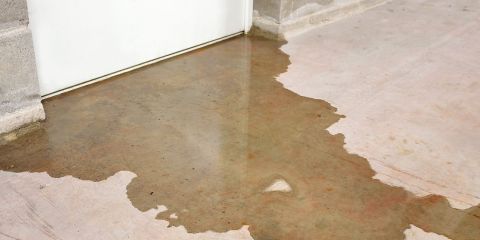Basement Leak Detection Vancouver
Prevent Expensive Water Related Disasters!
No matter what the source is of water in your basement, we can help. Our team of professionals can find the leak, fix the leak, mitigate water damage, and then perform restoration as needed. Call us first at (604) FIX LEAK.
The most likely place you will find water leaks is the basement, because it’s the lowest point of the house and gravity brings water to the basement. Basement leaks can come from several sources: eavestroughs, foundations, sewers, and pipes. Even water leaking around doors or windows or chimney flashing can find its way to the basement. Each source has its own repairs. Leaking and wet basements are dangerous as they may cause damage on bearing wall or foundations which are harmful to your home's structure and integrity. 604 FIX LEAK is ready to help for any emergency basement leak situations to prevent further damage to your Vancouver home.
Eavestroughs & Downspouts
Generally, the one of the most common culprits in the event of water leaking into through the basement walls is your eavestroughs and downspouts. Clogged downspouts cause eavestroughs to back up and spill rain water running off the roof down the side of the house where it can penetrate the siding or drain directly onto the foundation wall where tiny cracks will allow it to seep into the basement. It’s a fairly easy job to clean and inspect your eavestroughs, but many people are spooked working high off the ground. 604 FIX LEAK is here to assist you.
Foundation Walls
Here’s a secret: Foundation walls crack. “Concrete spends a lifetime curing.” When a house settles and the concrete hardens, cracks appear. You won’t see these cracks and most of the time they’re not a major issue, unless there’s water nearby. There are different ways to fix a leaky foundation wall:
Two Ways to Repair From the Outside or Inside
The outside involves digging a trench around the perimeter, sometimes reinstalling weeping tile and coating the outside wall of the house with a sealing material and adhering a dimpled barrier to enable any water to escape to the weeping tile without getting trapped against the wall.
The inside involves removing any drywall and studs to expose the crack, then injecting it with an epoxy or using a more modern system, which applies a fill-and-fibre patch to the wall so even if the crack enlarges, the system will still block the water out.
With any type of foundation cracks, it is strongly suggested to seek professional help. 604 FIX LEAK technicians are ready to help and provide you with the best advise.
Clogged Drain Tiles
Clogged or broken drain tiles are a major culprit for household floods. This costly nuisance is often caused by drain tiles breaking or becoming plugged as a result of overgrown tree roots infiltrating the tile, dislodged rocks, or soil movement caused by the ground repeatedly freezing and thawing. This problem is especially apparent in older homes where clay drain tiles or Big O are primarily used. With new construction, PVC piping with perforated holes is used as it allows the water to enter and be redirected away from a home’s foundation to a designated drain area. PVC pipes are also covered with a filter cloth that prevents any silt or soil from clogging the pipe.
Tips to Prevent Basement Leaks
Grade
Ensure all landscaping around the perimeter of your house slopes away from the foundation and that no dirt is piled above the level of your first floor.
Inspect your eavestroughs annually to ensure they are not clogged, and don’t have low spots where water can pool.
What to Look For Clogged Drain Tiles
- Overgrown roots near the foundation of your home
- Dampness on your walls or flooring on the lower and basement levels of your home
- Stains in your basement unfinished walls
- Staining or softness on your walls or flooring in your basement
